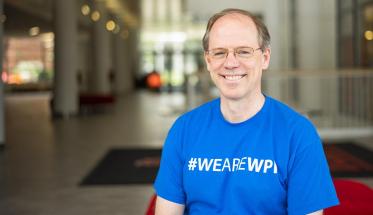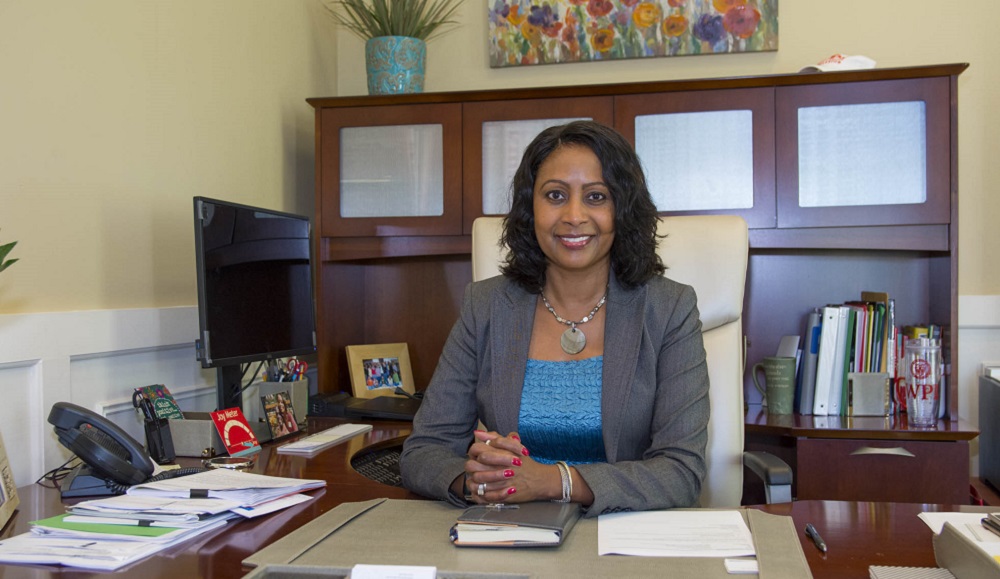In 2017 WPI began a three-year initiative to set standards and expectations around diversity, inclusion, and equity. Known as Project Inclusion, the initiative is a campus-wide process to think critically about effective, transformative strategies for making the university culture more welcoming to all.
The Daily Herd recently caught up with Peter Hansen, humanities & arts professor, director of the International & Global Studies program, and co-chair of Project Inclusion’s Rubric Steering Committee (RSC), to understand what it’s like to be a part of such a big undertaking.
Q: What interested you in co-chairing Project Inclusion (PI) in its first year?
A: I wanted to contribute to something that would have an impact. I have a lot of experience building consensus to make changes to the curriculum, academic programs, faculty promotion policies, and so on, and thought I could apply that expertise to building a more diverse, equitable, and inclusive university. I feel very fortunate to be able to contribute to things like Project Inclusion, global projects, and other programs that align my own values and interests so closely with WPI’s strategic priorities.
Q: How has your involvement in Project Inclusion changed your awareness of diversity, equity, and inclusion (DEI) as a faculty member at WPI?
A: At the outset I thought I was well-informed, but soon came to realize that my awareness was partial and limited. Project Inclusion has caused me to reflect on my own privilege as a white, male, tenured full professor who has had a lot of advantages in the lottery of life. I have zero nostalgia for the smaller, all-male, all-white, and almost-all-engineering faculty and students of an earlier era. The experience of women, people of color, or underrepresented minorities at WPI is different than my own. I knew that, yet Project Inclusion has reinforced just how important it is to be intentional about what it means for our staff, faculty, students, curriculum, and university to be more inclusive and diverse. We can bring a spirit of equity-mindedness to everything we do. We will need to have conversations on campus so that older kinds of privilege are not simply reproduced in new forms.
"We can bring a spirit of equity-mindedness to everything we do." -- Peter Hansen
Q: How did the Rubric Steering Committee use the Project Inclusion rubric this year?
A: Three subcommittees examined the perspectives of staff, students, and faculty using a professionally designed rubric of various components of diversity, equity, and inclusion. Are we emerging, developing, or transforming? What are the indicators to make this judgment? In most areas, we are “emerging”—which means beginning to recognize diversity, inclusion, and equity as priorities. In some we might not be far from “developing”—focused on enhancing individual and institutional capacities. We will be “transforming” when diversity, equity, and inclusion are embedded in our institutional culture. The results of this process will be presented to the campus in the fall and are intended to empower many people beyond the RSC to take next steps that are right for WPI.
Q: What has been most rewarding and most challenging about your role as RSC co-chair?
A: It has been very rewarding to work with so many talented people and to see their enthusiasm, energy, and passion for Project Inclusion. Michelle Jones-Johnson has brought a wealth of experience to WPI and as chief diversity officer is already transforming the university in ways that make possible and reinforce the work of Project Inclusion. Bonnie Walker provides significant leadership for the RSC with critical support from Christelle Hayles. Subcommittee chairs have done much of the real work, including Casey Wall, Lisa Stoddard, Charlana Simmons, Adrienne Hall-Phillips, Chrys Demetry, Corey Dehner, Avery Brown, and others. External consultants Alane Shanks and Jenene Cook give expert guidance on the rubric. The overall Rubric Steering Committee is large and inclusive, and the mix of backgrounds, positions, and interests has enriched the effort.
It has been a challenge to figure out how much information we need to assess WPI with the rubric. A few people will always want more data, or more precision, than is necessary to use the rubric effectively. It is always a judgment call to choose an indicator or identify a threshold. Even if WPI were “transforming” everywhere in the rubric today, that assessment would be just a snapshot in time. Transformation requires time as well as passion, and this year’s efforts inevitably will be updated as the work moves forward.
Q: What are your hopes for Project Inclusion in years 2 and 3?
A: In year 2, the project will examine two new areas: administrative leadership and institutional support; and curriculum, teaching, and research on diversity, equity, and inclusion. I hope these areas provide signs that we are already making some progress. By year 3, the rubric will address diversity, inclusion, and equity in our mission statements. Project Inclusion can help everyone—from students and alumni, academic and administrative programs, to the Board of Trustees—envision new ways to embed diversity, equity, and inclusion throughout WPI. We need to have appropriate expectations about what can be done in three years. I hope we continue to feel a fierce urgency to make changes, coupled with a determined patience to keep working when change remains incomplete.
Each year hundreds of new employees and thousands of new students arrive on campus. I and others will soon transition off the RSC and new people will come on board. To truly embed diversity, inclusion, and equity in our culture requires continual effort. In a results-oriented institution like WPI, where it can seem as if anything worth doing ought to be done within seven weeks, we need to shift away from such short-term horizons of expectation.
As a historian, I know that structural or cultural changes usually take a long time but occasionally happen very quickly. Whether results come rapidly or gradually, I am convinced that if we persist, our efforts will bear fruit and have a positive impact. Even incremental progress is important, and small victories should be celebrated.
- By Julia Quinn-Szcesuil



